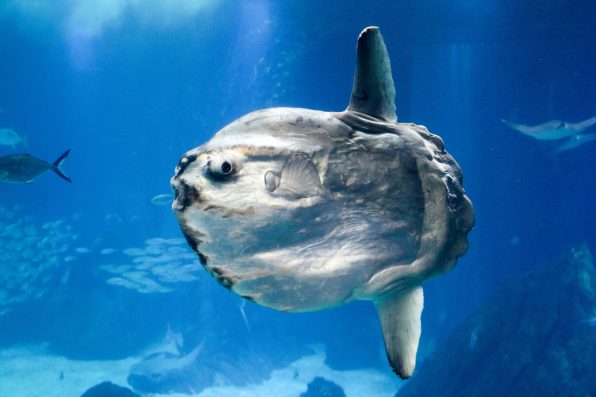The 2,000 Pound Carcass Of A Rare Hoodwinker Sunfish Recently Washed Ashore Oregon’s Northern Coast

The northern coast of Oregon is currently a popular destination for people living nearby to visit, and that’s because a rare fish carcass just washed ashore there. The creature is known as the hoodwinker sunfish. It is 7.3 feet long and weighs around 2,000 pounds.
The giant fish was found on a beach in the coastal town of Gearhart, Oregon, which is located about 80 miles northwest of Portland. Soon enough, photographs of the carcass flooded social media, and many individuals rushed to the beach to see it with their own eyes.
Its massive size isn’t the only source of fascination. People are puzzled as to why it appeared in Oregon, of all places, because hoodwinker sunfish only live in the temperate waters of the southern hemisphere. Or at least that’s what scientists thought.
According to a social media post from the Seaside Aquarium, other hoodwinkers have recently washed up in California and Alaska, so their habitat range may be wider than previously assumed.
Initially, marine biologists believed the huge fish was a common ocean sunfish (Mola mola). But upon closer inspection, they determined it was a hoodwinker sunfish (Mola tecta). It may be the largest example of the specimen ever found.
Their scientific name, “mola,” is derived from a Latin word that translates to “millstone,” referring to the flat, round body of the sunfish. The name was inspired by their “sunbathing behavior,” when they float on the water’s surface to catch prey that happens to drift their way.
The Latin word “tecta” means hidden or disguised, which is a nod to how the new hoodwinker species had been “hiding in plain sight,” as described in the aquarium’s post.
The hoodwinker sunfish was first described in 2017 by marine biologist Marianne Nyegaard. Unlike the common ocean sunfish, its skin stays smooth as it ages.
The fish also has tough skin that makes it difficult for scavengers to pierce through, so it is likely that the carcass will remain on Gearhart Beach for a while. It gives curious onlookers time to observe this wonder of nature and possibly learn something new.

Kaylee – stock.adobe.com – illustrative purposes only, not the actual fish
There are also other subtle differences between the two species, although you have to know what you’re looking for in order to spot them.
The ocean sunfish was discovered in 1758. Nearly three centuries later, the hoodwinker was officially identified.
At first glance, the two fish look almost identical. But, their key differences lie in their skin and tails. As hoodwinkers age, their skin stays totally smooth, while the ocean sunfish’s skin tends to wrinkle.
In addition, the hoodwinker’s tail flap is separated into two parts that can move independently from each other. The flap of the ocean sunfish is just one wavy piece with bony formations.
The hoodwinker is the fifth species of sunfish that scientists know of. Who knows? Maybe others are still out there, just waiting to be identified!
Sign up for Chip Chick’s newsletter and get stories like this delivered to your inbox.
More About:Animals





